Enchanting Bryce Canyon: A journey through America's fairytale landscape
Disclosure: Bear in mind that some of the links in this post are affiliate links and if you go through them to make a purchase we will earn a commission at no additional cost to you. We chose these companies / hotels because of their quality and not because of the commission we receive from your purchases.
Bryce Canyon National Park is, according to many, the most beautiful natural park in the United States. When you first see this natural area, it is literally breathtaking. Descriptions of Bryce Canyon vary quite a bit, and that's simply because the landscape really doesn't let itself be described. Or photographable. Anyone who has been there will agree: in reality the canyon is more beautiful, impressive and mysterious than a photograph would suggest. Let yourself be enchanted by the wild magic of Bryce Canyon.
The park is more like a fairy tale landscape than a nature preserve. Mother Nature has gone wild in creating delightful landscapes. Think of thousands of pillars of red and orange stone towering above bright green pines. Bryce Canyon's mystical "earth pyramids" owe their otherworldly beauty to limestone and sandstone exposed to years of wind, water and ice erosion. Some neatly lined up, others crisscrossed. And (often) as an encore: a bright blue sky. This bizarre landscape seems as though it was created specifically for postcards and posters.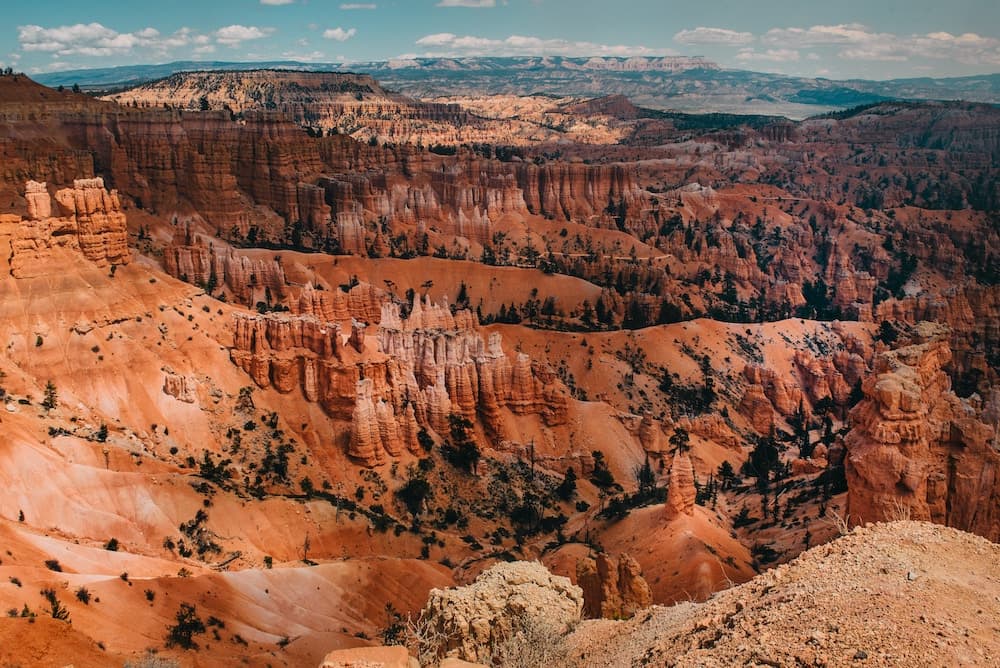
Bryce Canyon's unusual geological appearance is particularly so special
because of the geological color mix of white, pink, orange and red. Colors that become even more beautiful during sunrise and sunset from the
viewpoints of Sunrise Point, Sunset Point, Inspiration Point, Bryce
Point and the absolute best: the Amphitheater. This popular point
overlooks a canyon with thousands of peaks in the most generous colors.
The various viewpoints are easily accessible by hiking trails and
shuttle buses run to take you from one viewpoint to another.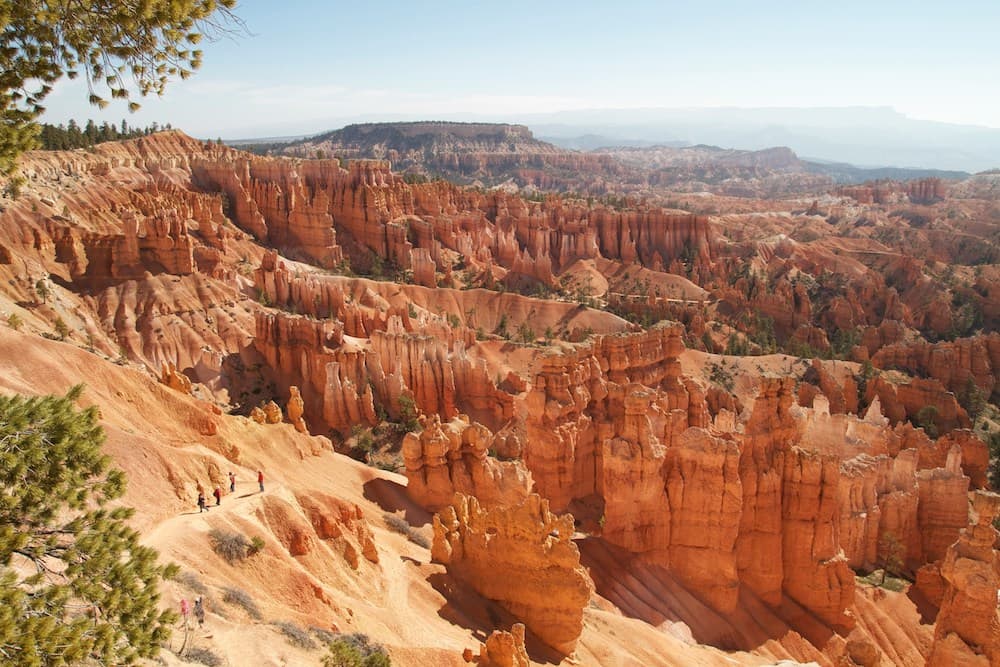
Despite the many viewpoints, the real crown jewels of Bryce Canyon are
hidden in the gorge. During your visit to Bryce, don't miss the Navajo
Loop. This challenging 2-mile trail winds through the valley's
pink/orange pillars, past stunning highlights such as Silent City, Wall
Street and Thor's Hammer. You can also opt for the longer, but less
intense, Queen's Garden Trail. This hiking trail, perfect for early birds, passes by the colorful Queen Victoria rock.
The park was named after Mormon settler Ebenezer Bryce, who moved to the area with the intention of starting a ranch. That failed, of course; the plateau is not suitable for a ranch. Bryce surely could not have guessed that the area then named after him would later become one of the best-visited national parks in the country
To help you make the most of your visit, we've compiled a list of top tips and must-see locations within the park.
Fairyland Point in Bryce Canyon
Fairyland Canyon is a veritable fairyland. Here you can clearly see why the Paiute Indians thought the hoodoos were in fact petrified people. The wondrous amphitheaters of Bryce Canyon consist of point-shaped sand and limestone rocks, which owe their totemic appearance to years of erosion. One such limestone totem pole is called a "hoodoo" by Americans, meaning witchcraft. As soon as you set one foot in the park, you understand why. The pinnacles are almost otherworldly and you won't find it anywhere else in the world.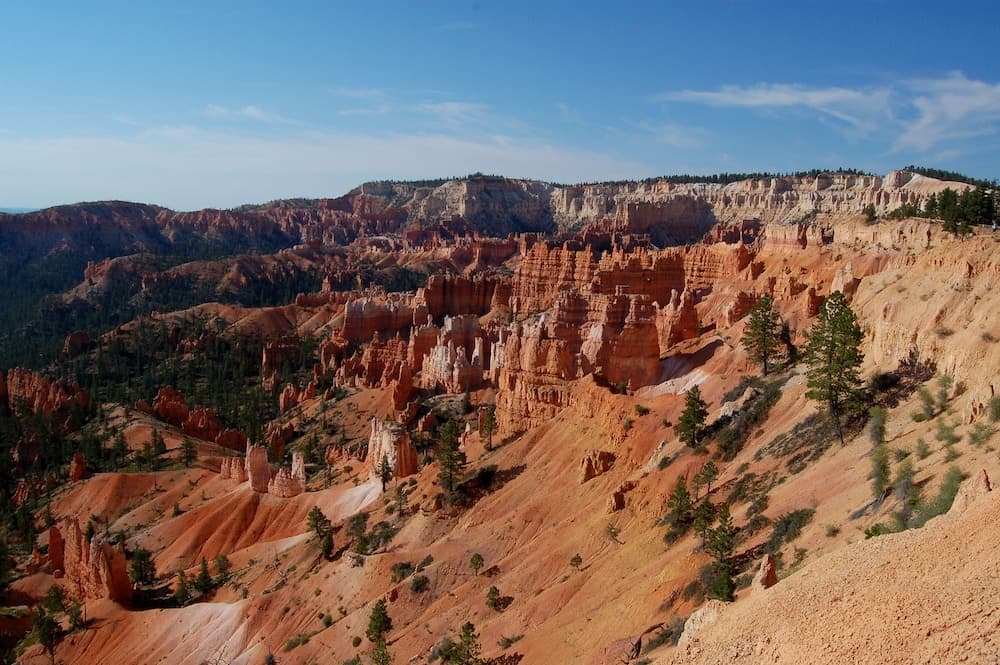
Row upon row they stand side by side, sometimes strikingly close to the viewpoint. And all because of the unique interplay of wind and rain for centuries. Fairyland Canyon is in the northern part of the park, on the main trail.
Bryce Point
Bryce Point is perhaps the most popular among visitors. This is a good point to experience the bizarre landscape in all its grandeur. Here you can see the amphitheater, as it is often called, in all its glory. With countless hues changing as the weather changes and strikingly straight rows of trees growing between the rocks. So this is a good place to visit in the morning and afternoon, for example. Then you can see the differences well.
Sunrise Point
This overlook offers one of the best views in the park. From Sunrise Point you can even see across the park boundary, as the Pink Cliffs are visible in the background. And you can also clearly see how pine trees cling to the rocks and sand. Sometimes their roots are exposed due to erosion. It shows how difficult it is here for trees to grow. And as the name suggests, the sunrise here is more than worth it.
Sunset Point
The name of Sunset Point says it all, this is a good place to watch the sunset. But this spot is not only worth seeing when the sun goes down. Here you can clearly see the different colors of the rocks. This spot is also home to one of the most famous rocks: Thor's hammer. This lone rock stands out far above the others. And yes, with a little imagination it looks like a giant hammer.
Lodging in and around Bryce Canyon
If you want to explore this nature reserve properly you will need several days. Especially if you want to go hiking. You can find several good hotels, cheap hostels, vacation rentals and even apartments in the vicinity. You can easily book these online and a great option close to the entrance of the national park is the Best Western Bryce Canyon. Be on time though, Bryce Canyon is incredibly popular. As a result, many hotels are often fully booked.
Paria View
Oddly enough, this viewpoint (and not Sunset Point) is listed as the best place to watch the sun set. The reason is simple, this is the only place where the last rays of the sun reach the hoodoos. The rest of the park is long covered in shadow by then.
Swamp Canyon in Bryce Canyon
Swamp Canyon is a remarkable part of the park. It is extremely wet compared to the rest of the area. Two creeks run through this narrow canyon that provides a home for salamanders and numerous songbirds. The plant life is also different from the rest of the park. Ideal for exploration.
Farview Point in Bryce Canyon
This viewpoint particularly shows the surrounding area of Bryce. Or in other words, here you can get a good look at how the landscape slowly turns into forest. 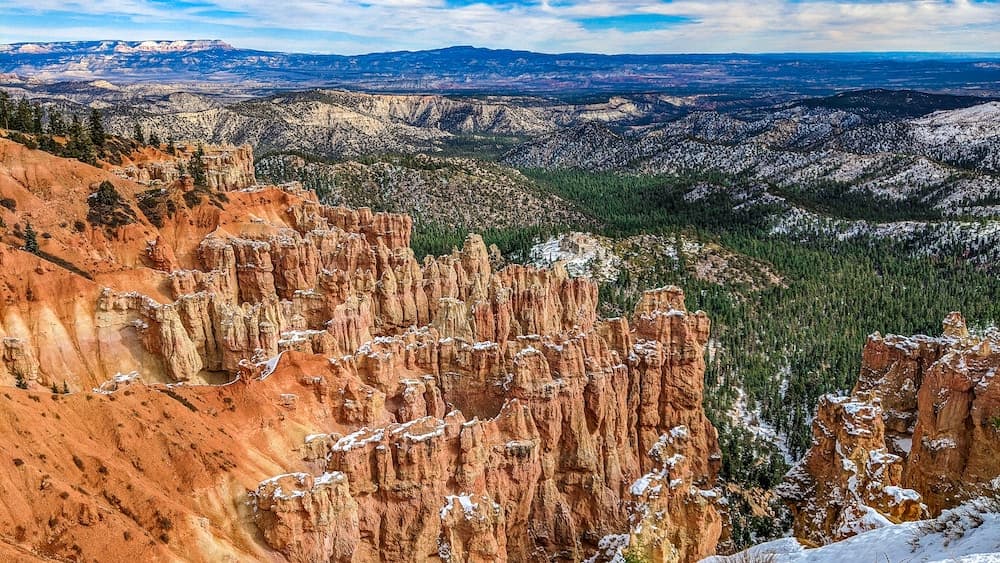
Sometimes it's not easy to understand why there are forests growing in some places and a row of pillars a little further on. You can see for miles here, in clear weather.
Tourist trails in Bryce Canyon National Park
Besides the hikes in Bryce Canyon National Park are wonderful, so is the approximately 30-mile scenic drive (Highway 63). This scenic drive starts at the Visitor Center. Stop there to pick up a brochure full of useful Bryce Canyon information. All the viewpoints are on the east side of the park road (on the left, as you drive south), but that doesn't mean the west side of the road isn't full of breathtaking scenery. To avoid cutting off traffic, we recommend driving all the way south and then stopping at the viewpoints on the way back.
Best time to visit Bryce Canyon National Park
The best times to visit Bryce Canyon are in late spring (April to June) and fall (September to November). During these seasons you'll get comfortable weather, fewer crowds, and the park looks beautiful. Summer (July to August) is warm and great for hiking, but it's also the busiest and it can get very hot. Winter (December to March) is cold with snow, offering unique scenery and fewer visitors, but some areas might be closed. 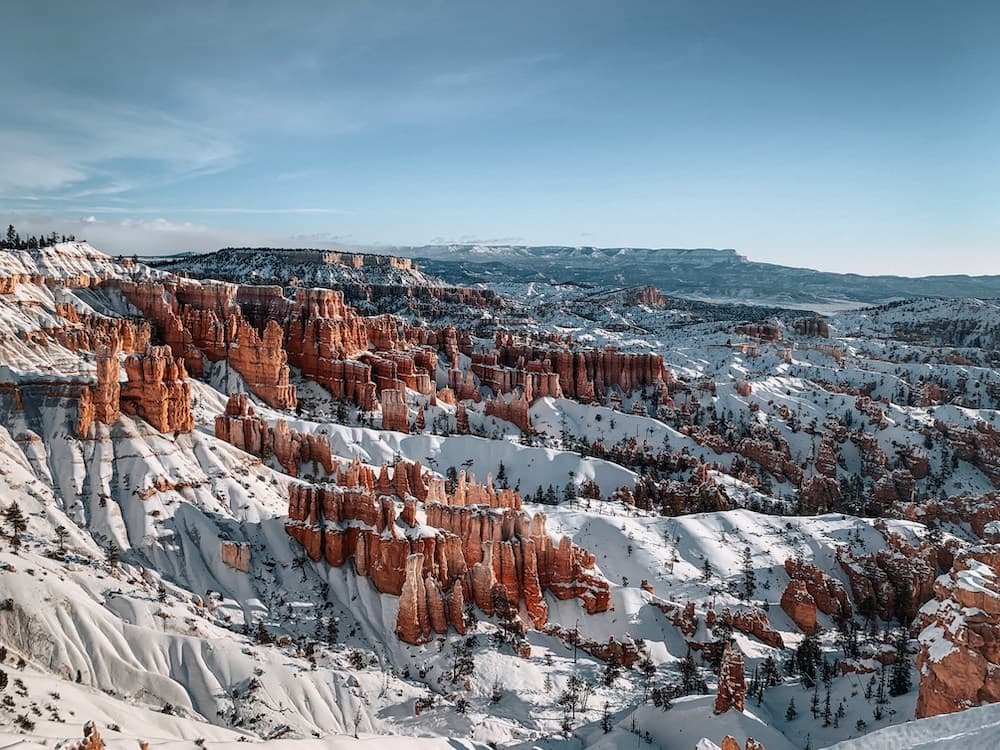
So, for a mix of nice weather and less crowds best to aim for spring or fall. Here you find more climate details.